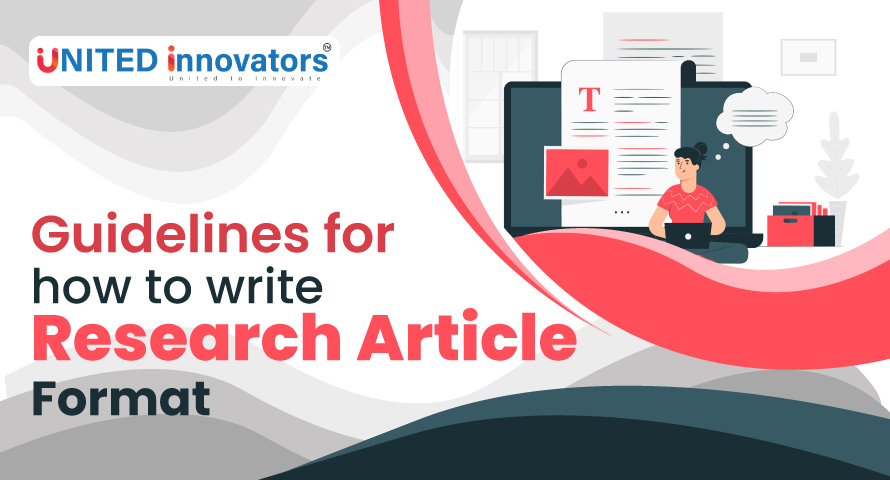Formatting is important in research article (as well as also research proposal) writing because it helps to make the document clear and easy to read. Proper formatting can also help to convey the structure and organization of the paper, making it easier for readers to understand the main points and the flow of ideas. Additionally, many journals and academic institutions have specific guidelines for formatting research articles, so it is important for authors to follow these guidelines to ensure that their papers are accepted for publication.
- How Can Getting Your Colleagues, Mentors, & Other Research Veterans To Review Your Manuscript Prove To Be Immensely Helpful
-
- Formatting is an important aspect of research paper writing, as it helps to make the document clear and easy to read.
- A well-formatted paper can also help to convey the structure and organization of the research, making it simpler for readers to comprehend the main points and the flow of ideas.
- However, formatting can often be a tedious and time-consuming task, and it can be difficult for researchers to ensure that their paper is formatted correctly.
- One way to ensure that the formatting of a research paper is excellent is to get colleagues, mentors, and other research veterans to review the manuscript for them.
- The first step in getting colleagues, mentors, and other research veterans to review a manuscript is to ask for their help.
- Researchers can reach out to colleagues and mentors who have experience in writing and publishing research papers and ask if they would be willing to review their manuscripts.
- Additionally, researchers can also ask for feedback from other research veterans in their field, such as senior faculty members or established researchers.
- Note that the reviewers should be people who are familiar with the formatting guidelines of the journal or academic institution where the paper will be submitted.
- When seeking feedback from colleagues, mentors, and other research veterans, researchers should provide a clear explanation of what they are looking for in terms of formatting.
- For example, researchers should specify if they are looking for feedback on the overall structure and organization of the paper or if they are looking for feedback on specific aspects of the formatting, such as headings, citations, and figures.
- This will help the reviewers to focus their feedback and provide more specific and useful comments.
- Once the manuscript has been reviewed, researchers should take the feedback into consideration and make any necessary revisions.
- It is important to be open to constructive criticism and to make changes that will improve the overall quality of the paper.
- Researchers should also be thankful to their reviewers for taking the time to review their manuscripts and for providing valuable feedback.
- In addition to getting feedback from colleagues, mentors, and other research veterans, researchers can also take steps to ensure that their research article writing format is on-point by using templates, proofreading and editing their paper, and following the guidelines provided by the journal or academic institution.
- Templates can be a useful guide for formatting a research paper, and they can help to ensure that the paper meets the required standards.
- Researchers should also proofread and edit their papers to catch any errors or inconsistencies in formatting.
- Furthermore, researchers should be aware of the guidelines provided by the journal or academic institution, and they should make sure that their paper meets these guidelines.
- What Sort Of Formatting Feedback Can One Expect To Receive From These People Upon Getting A Research Manuscript Reviewed By Them
-
- When getting a research manuscript reviewed by colleagues, mentors, and veterans, researchers can expect to receive a variety of feedback on the formatting of their paper. The type of feedback will depend on the specific aspects of formatting that the researcher has asked for feedback on, as well as the expertise of the reviewer.
- One of the most common types of formatting feedback that researchers can expect to receive is feedback on the overall structure and organization of the paper. Reviewers may comment on the flow of ideas, the logical progression of the paper, and the level of detail provided in each section. They may also suggest ways to improve the organization of the paper, such as by adding or removing sections or by reorganizing the content.
- Another type of feedback that researchers can expect to receive is feedback on the use of headings and subheadings. Reviewers may comment on the level of detail provided in each heading, the consistency of headings throughout the paper, and the use of formatting such as bold or italics to distinguish headings. They may also suggest ways to improve the use of headings and subheadings, such as by adding or removing headings or by making headings more descriptive.
- Researchers can also expect to receive feedback on the use of figures and tables. Reviewers may comment on the quality of the figures and tables, the appropriateness of the data presented, and the use of formatting such as captions, labels, and gridlines. They may also suggest ways to improve the use of figures and tables, such as by adding or removing figures or by making figures more informative.
- Feedback can be expected on the use of citations and references. Reviewers may comment on the use of formatting such as in-text citations, reference lists, and bibliographies, the consistency of citation style throughout the paper, and the completeness of the reference list. They may also suggest ways to improve the use of citations and references, such as by correcting errors in citations or by adding missing references.
- One should also expect to receive feedback on the use of font, spacing, and margins and how to write a successful research proposal in general. Reviewers may comment on the use of appropriate font size, spacing, and margins, the consistency of formatting throughout the paper, and the use of formatting such as bold, italics, and underlining. They may also suggest ways to improve the use of font, spacing, and margins, such as by increasing or decreasing the font size or by adjusting the margins.
- Feedback will vary depending on the expertise of the reviewer. Reviewers who are familiar with the formatting guidelines of the journal or academic institution where the paper will be submitted will be able to provide more specific and useful comments. Additionally, it’s also important for the researcher to provide clear instructions on what specific areas of formatting they would like feedback on.
- What Are The Best Ways To Ensure Compliance With All Formatting Guidelines Put Forth By The Journal Of One’s Choice
-
- Formatting guidelines can vary greatly between journals, and non-compliance can result in the rejection of the paper or a delay in the publication process.
- Therefore, it is essential for researchers to understand the formatting guidelines of their chosen journal and to take steps to ensure compliance.
- Carefully read and understand the guidelines provided by the journal.
- Most journals provide detailed instructions on formatting requirements, including font type and size, line spacing, margins, and the use of headings and subheadings.
- It is important to read and understand these guidelines in order to ensure that the paper is formatted correctly.
- Use a template provided by the journal if one is available.
- Many journals provide templates that researchers can use to format their papers, which can greatly simplify the process and ensure compliance with guidelines.
- These templates often include detailed instructions and examples and can be a valuable resource for researchers.
- It is also recommended to use software that can automatically format the manuscript.
- Such software will check your manuscript against the formatting guidelines of the journal that you have selected, making it easier to detect any formatting errors.
- Check the paper for compliance with guidelines prior to submission.
- This includes reviewing the paper for consistency in formatting, such as the use of font size and type, line spacing, margins, and headings and subheadings.
- It is also important to review citations and references, making sure they are correctly formatted and complete.
- It is also helpful to get feedback from colleagues, mentors, or research veterans on the formatting of the paper.
- They may be able to identify formatting errors that you may have missed and can provide suggestions for improvement.
- In addition, it is a good idea to familiarize yourself with the citation style required by the journal and to use a citation management tool to format citations and references.
- This will help to ensure compliance with guidelines and will make it easier to detect any errors.
- Be aware that formatting guidelines can change over time, and staying up to date with any changes made by the journal is crucial.
- Some journals may update their guidelines or change the template they provide, so it is important to stay informed and to make sure that the paper is compliant with the latest guidelines.
- What Are Some Effective Strategies To Ensure Compliance With A Journal’s Research Article Formatting Guidelines
- Carefully Read & Understand The Guidelines
-
- The first step in ensuring compliance with formatting guidelines is to carefully read and understand the guidelines provided by the journal.
- Most journals provide detailed instructions on formatting requirements like font type and size, line spacing, margins, and the use of headings and subheadings.
- It is important to read and understand these guidelines in order to ensure that the paper is formatted correctly.
- Use A Template
-
- Many journals provide templates that researchers can use to format their papers, which can greatly simplify the process and ensure compliance with guidelines.
- These templates often include detailed instructions and examples and can be a valuable resource for researchers.
- Use Formatting Software
-
- Some software can automatically format the manuscript based on the selected journal formatting guidelines.
- Such software will check your manuscript against the formatting guidelines of the journal you have selected, making it easier to detect any formatting errors.
- Check The Paper For Compliance Prior To Submission
-
- Before submitting the paper, it is important to review it for consistency in formatting, such as the use of font size and type, line spacing, margins, and headings and subheadings.
- It is also important to review citations and references, making sure they are correctly formatted and complete.
- Get Feedback From Those Who’ve Had Their Work Successfully Published At The Same Journal
-
- Those researchers and colleagues who’ve managed to have their research findings successfully published in the same journal that you wish to have your research published in can prove to be incredibly helpful when it comes to offering specific feedback.
- This specific feedback will enlighten you on what the editors and reviewers working at the journal specifically look out for.
- The editors and reviewers at every journal differ in the way they approach vetting a research manuscript.
- This is why it’s vital to have the insight of someone who is well aware of the process and peculiarities of a journal in order to ensure seamless publication for yourself.
- How To Go About Using Templates To Get The Formatting Of A Research Paper Right
-
- Templates provide a pre-designed structure and formatting that can save time and ensure consistency in the final product.
- Choose The Right Template
-
- Many journals provide templates for researchers to use when formatting their papers.
- These templates are often specific to the journal and its formatting guidelines, so it is important to choose the template that corresponds to the journal to which you plan to submit your paper.
- It’s important to note that some journals do not provide templates, and in that case, you should follow the guidelines provided by the journal.
- Understand The Template
-
- Before using a template, it is important to understand its structure and formatting.
- This includes the usage of headings and subheadings, font size and type, line spacing, margins, and any other specific formatting requirements.
- Customize The Template To Fit The Paper
- Templates are a great starting point, but it’s important to customize them to fit the specific requirements of the paper.
- This includes adding or removing sections, adjusting headings and subheadings, and making any other necessary changes to ensure that the paper’s formatted accurately.
- Use The Template Consistently
-
- Consistency is key when it comes to formatting a research paper.
- Once the template has been customized to fit the paper, it is important to use it consistently throughout the paper.
- This includes using the same font size and type, line spacing, margins, headings, and subheadings.
- Review & Double-Check The Formatting
-
- Before submitting the paper, it is important to review the formatting to ensure that it is consistent and compliant with the journal’s guidelines.
- This includes checking the use of font size and type, line spacing, margins, headings, and subheadings, as well as citations and references.
Why Is Hiring A Research Paper Writing Service Your Best Bet?
Hiring research paper writing services can prove to be useful for ensuring that a research manuscript is formatted to perfection. These services can provide expert guidance and assistance with formatting, editing, and proofreading, which can help researchers to improve the quality of their papers and increase their chances of acceptance by a journal.
- Expert Guidance On Formatting
-
- Research paper writing services employ experts in academic writing who are familiar with the formatting guidelines of various journals.
- They can provide guidance on formatting and help researchers to ensure that their papers are compliant with the guidelines of the journal to which they plan to submit their work.
- Editing & Proofreading Services
-
- Research paper writing services also provide editing and proofreading services.
- These services help researchers to identify and correct any errors in grammar, punctuation, and spelling, which can help to improve the overall quality of the paper.
- They also help with the consistency of formatting throughout the paper.
- Tailored Assistance
-
- Research paper writing services (in addition to patent filing services) can provide tailored assistance to researchers, taking into account their specific needs and the requirements of the journal to which they plan to submit their work.
- This allows for a more customized approach to formatting and can help to improve the chances of acceptance.
- Time-Saving
-
- Writing a research paper necessitates a ton of time, and formatting it to perfection can take even more time.
- Hiring a research paper writing service can save researchers valuable time, allowing them to focus on other aspects of their research while the service takes care of formatting their manuscript.
- Increased Chances Of Being Accepted
- By ensuring that a research manuscript is formatted correctly, researchers increase their chances of acceptance by a journal.
- Research paper writing services can help researchers to improve the quality of their papers and increase their chances of acceptance by providing PhD research assistance with formatting, editing, and proofreading.



